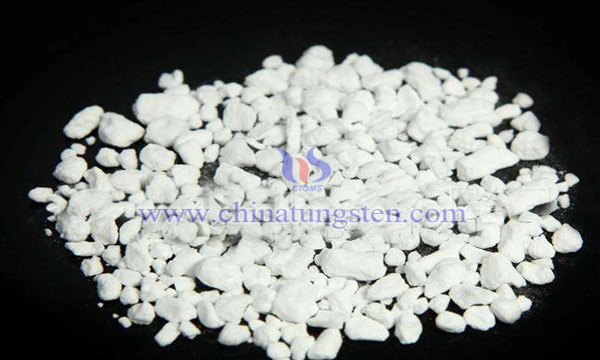Molybdenum Doped Tungsten Trioxide Photocatalyst
- Details
- Category: Tungsten Information
- Published on Wednesday, 07 August 2019 23:04
With the rapid development of human society and economy, energy and environmental problems have become increasingly prominent. Organic dye wastewater pollution has become one of the most concerned environmental problems. These organic dye molecules not only destroy the ecological environment, but also contain aromatic intermediates which are carcinogenic.

Photocatalysis is a new technology for environmental protection. Photocatalysts have the advantages of complete mineralization of organic dye molecules, no secondary pollution, low energy consumption and easy operation. Semiconductor WO3 has good thermal stability, photosensitivity and photocorrosion resistance, and can absorb part of visible light. It is a potential visible photocatalyst. However, the photocatalytic activity of WO3 is relatively low, so it is necessary to modify WO3 to improve its photocatalytic activity.
In order to improve the photocatalytic performance of WO3, doping with other metals is often used, such as molybdenum, titanium, iron, bismuth and so on. For example, Molybdenum Doped Tungsten Trioxide photocatalyst. Molybdenum-doped tungsten trioxide photocatalyst was synthesized by hydrothermal method.
1.5g sodium tungstate and 0.07g ammonium molybdate were dissolved in 30 mL deionized water and added to 30 mL6mol/LHNO3 solution drop by drop. After fully stirring, they were transferred to the hydrothermal kettle. After heating at 180 ℃ for 4 hours, the reaction was cooled to room temperature, washed with deionized water, and vacuum dried at 80 ℃ for 8 hours, nano-scale Molybdenum-doped tungsten trioxide was obtained. The Molybdenum-doped tungsten trioxide catalyst of 0.20g was dispersed into rhodamine B solution of 30 mg/L. After 180 minutes of visible xenon lamp irradiation, the degradation rate was 92.21%.
Molybdenum doped tungsten trioxide photocatalyst can reduce the probability of electron hole recombination in tungsten trioxide, reduce the band gap width of monomer tungsten trioxide, and thus improve the performance of tungsten trioxide photocatalytic degradation of dye molecules. The photocatalyst can be recycled without secondary pollution. It is an environmentally friendly photocatalyst.
- Tungsten Oxide Manufacturer & Supplier, Chinatungsten Online: www.tungsten-oxide.com
- Tungsten News & Prices of China Tungsten Industry Association: www.ctia.com.cn
- Molybdenum News & Price: news.molybdenum.com.cn
- Tel.: 86 592 5129696; Fax: 86 592 5129797; Email: sales@chinatungsten.com